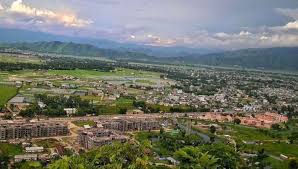Manipur: Chief Secretary reviews health infra in hill districts
Summary of the Topic
Manipur’s Chief Secretary, Vineet Joshi, conducted an in-depth review of healthcare infrastructure in the state’s hill districts. The initiative focused on identifying gaps in healthcare delivery, with a spotlight on public health facilities. The review aimed to ensure equitable access to quality healthcare in these remote areas, emphasizing upgrades to medical equipment, staff training, and infrastructure development【73】【74】.
Revamping Healthcare in Manipur’s Hill Districts
The Urgent Need for Healthcare Improvements
Imagine living in a place where getting basic medical care is a challenge. This is the reality for many residents in Manipur’s hill districts. These regions often lack adequate health facilities, trained personnel, and essential resources. The state government, recognizing these issues, is stepping up its efforts to bring quality healthcare closer to these underserved populations.
Key Objectives of the Review
The review led by Chief Secretary Vineet Joshi wasn’t just a routine visit. It was a mission to:
- Evaluate the condition of existing health facilities.
- Identify areas that needed immediate attention, such as upgrading medical infrastructure and increasing healthcare accessibility.
- Address staffing shortages in rural health centers.
This move is part of a broader strategy to ensure healthcare equity across Manipur, especially in areas hit hardest by neglect or geographical challenges.
What Makes This Review Significant?
This initiative isn’t just about inspecting health centers—it’s about fostering systemic changes. By involving expert committees and consulting with local authorities, the government is focusing on sustainable solutions. The Chief Secretary’s approach includes gathering ground-level feedback, which provides a clear picture of the on-the-ground challenges【73】【74】.
Long-Term Vision for Health Equity
Infrastructure Overhaul
One of the critical challenges in hill districts is inadequate infrastructure. To address this:
- Plans are underway to modernize healthcare facilities, equipping them with advanced diagnostic tools.
- New projects aim to build primary health centers (PHCs) in remote locations.
Capacity Building
Healthcare isn’t just about buildings and machines—it’s about the people who run them. To ensure skilled personnel:
- Training programs for medical staff are being prioritized.
- Recruitment drives are being held to fill vacancies in these regions.
Community Engagement
Health initiatives often fail without community buy-in. Recognizing this, local leaders and healthcare workers are being involved in planning and implementing these projects. Their input ensures the solutions are culturally appropriate and practical for local needs.
Challenges on the Road Ahead
Geographical Barriers
Manipur’s rugged terrain makes accessibility a significant challenge. Reaching the remotest villages requires innovative solutions, such as mobile health clinics.
Resource Allocation
Budget constraints often limit the scope of improvements. Efficient resource management and tapping into central government schemes are crucial for success.
Sustaining Momentum
Health reforms take time. Ensuring that these initiatives don’t lose steam halfway through will require consistent monitoring and periodic reviews.
Why This Matters
Improving healthcare in Manipur’s hill districts is more than just a local concern—it’s about setting a benchmark for equitable health policies in India. These efforts highlight the importance of bridging the urban-rural healthcare divide and ensuring no one is left behind.
FAQs
- What were the main areas of focus during the healthcare review? The review emphasized upgrading infrastructure, increasing accessibility, and addressing staff shortages.
- How will these changes impact the local population? Improved healthcare services will provide better access to treatments, reducing preventable diseases and mortality rates.
- Are there plans to involve local communities in these initiatives? Yes, community leaders and healthcare workers are being consulted to ensure culturally appropriate solutions.
- What challenges does the government face in implementing these changes? Geographical barriers, resource allocation, and sustaining long-term efforts are key challenges.
- How does this initiative align with national health policies? It supports India’s broader goal of achieving universal health coverage by addressing disparities in remote areas.



